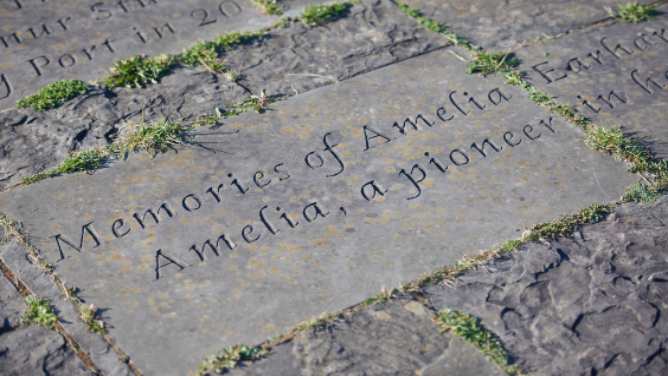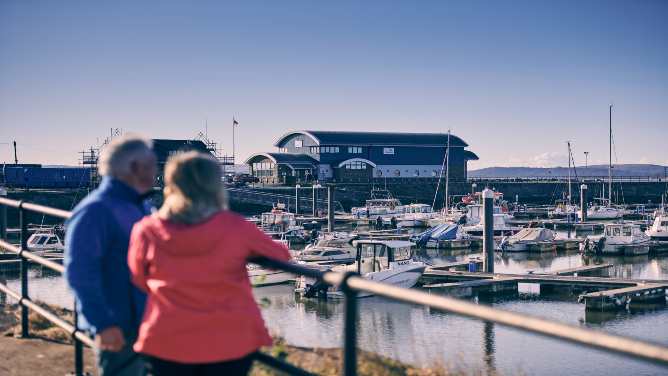Like many small towns and villages along the South Wales coast, Pembrey has its roots in heavy industry. Although the village dates from the Middle Ages, most of Pembrey’s development took place in the 18th- and 19th-century coal mining boom, when it was a port. Until 1965, a munitions works produced TNT and ammonium nitrate in the relative safety of the dunes of neighbouring Pembrey Burrows.
There’s few reminders of its industrial past today, mind. Pembrey Burrows is now home to one of Wales’ most popular attractions, the spectacular Pembrey Country Park. A new marina development will complete the transformation of the harbour from heavy industry port to leisure quarter. The Millennium Coastal Path, a 13-mile walkway and cycleway along the Loughor estuary, runs from Bynea in the east right through Burry Port, before reaching its end in Pembrey.
Read on to discover how this area is about much more than its industrial heritage.
Parks and recreation
Pembrey Country Park and Beach is set in 500 acres of glorious parkland, just a few minutes’ drive from the village itself. Younger members of the family will love the 18-hole crazy golf course and the adventure playground will give them plenty of opportunity to burn off excess energy. Active teens (and grown-ups, for that matter) will enjoy riding Wales’ longest toboggan run and skiing, snowboarding and tubing down the 130-metre dry slope. And for those just wanting to take some time out from the world (or from the rest of the family!), there are a number of peaceful woodland trails and parkland paths for you to explore on foot or by bike.
Shifting sands
At the southern edge of Pembrey Country Park are the dunes and beach of Cefn Sidan – Wales’ longest beach at 8 miles in length. It also happens to have won more coveted Blue Flag awards than any other beach in Wales. Visit on a clear day and you’ll be rewarded with magnificent views as far west as Caldey, over to Lundy, then sweeping round to the Gower Peninsula. It’s a favourite of sun worshippers, swimmers and walkers alike.
But low tide reveals a darker side to this stretch of coast, when the wrecks of a number of ancient ships become visible. Some were caught out by the infamous tides and shallow banks of the Bristol Channel, others lured aground by gangs of looters who then robbed their precious cargoes.
With 300 shipwrecks reported to be in the area, it should come as no surprise that winter storms occasionally give up more plunder from below. A 12-foot, one-tonne anchor, thought to be up to 170 years old, was exposed and recovered in 2013.

Burry Port
A short walk away, there was little in Burry Port but farms until the harbour was built in the 1830’s to ship coal from the Gwendraeth Valley. Tinplate, copper, silver and lead works then opened up alongside. When the old port at Pembrey became so silted up that it had to be abandoned, all marine traffic was moved to Burry Port. The lighthouse that stands on the west breakwater of the outer harbour is one of the only reminders that this was once an important as a coal exporting dock.
Burry Port is one of the parties involved in a long-disputed claim over exactly where Amelia Earhart landed first after her record-breaking flight across the Atlantic. The other party being the smaller village of Pwll, two miles to the east. The controversy stems from the fact that the aircraft - a seaplane called Friendship - touched down in the Loughor Estuary, off Pwll. However, the plane was towed to Burry Port Harbour, which was where Earhart and her crew first stepped onto British soil. Hence, both claim the landing. In Burry Port, the achievement is commemorated at the Amelia Earhart Gardens in the middle of town and with a Grade II-listed monument on the harbourside. Meanwhile, Pwll has an official blue plaque to mark the landing in the estuary.


Walk on the wild side
The 3.5-mile walk from Burry Port Harbour to Pembrey Country Park is the last section of the Millennium Coastal Path. It’s also part of the 67-miles of Wales Coast Path that runs through Carmarthenshire. Pembrey Burrows, is a large sand dune system which is actively being built up – a rare feature – where you’ll see the different stages of dune development, including embryo dunes, large semi-stable yellow dunes and the stable grey dunes that form dune grassland. As well as many rare plants, the insect life that relies on them is also unique and you can find a number of species of butterfly and solitary bees and wasps. The saltmarsh comes alive with colour in summer – rock sea lavender turns it purple in August and a little later, golden samphire and sea aster cover it with a blaze of yellow.
Spoiler alert
Just outside the village, Pembrey Circuit is the home of Welsh motorsport and you can get on track by booking one of the three driving experiences they offer there. The 1.46-mile per lap circuit has been driven by the greatest; Formula One teams including Arrows, BAR, Benetton, Jordan, McLaren and Williams have all tested here. The circuit’s lap record – albeit unofficial – was set by Ayrton Senna. The circuit also has a busy calendar of race meetings throughout the year, including truck, car and bike racing and spectators can see large sections of the circuit from almost all of the viewing areas.

Insider tips
The must do: Treat yourself to a high-speed driving experience at Pembrey Circuit
The photo stop: Get up before dawn to capture the early sunlight as it trickles across the dunes and beach at Cefn Sidan
The surprising story: Head to the Pembrey Country Park Visitor Centre and discover how the workers at the former munitions factory risked their lives every day
The refreshment stop: Afternoon tea at Harbour Light Tearoom in Burry Port. Not only is it dog friendly, they also serve ‘doggy beer’ from a barrel (Fear not – it’s actually water!)
The hidden gem: St Illtyd’s Church, where many of the seamen and passengers who perished in the ships dashed on the sandbanks off Cefn Sidan are buried.
